As soon as the summer comes around, we welcome the warmth with high spirits and a magic smile on our faces.
Summer’s mark the beginning of fun time, holidays, picnics, barbecues, fresh breezes, and …pesky flies.
Yes, troublesome flies.
The warmth of summer seems to bring out the worst in the insect population, with pesky flies invading our home and spoiling the summer mood. Flies are more than just a mere nuisance.
According to a study published in a renowned entomology journal, there are more than 100,000 known species of flies (only God knows how many species are still unknown).
Their presence alone is often annoying to people, but the true effects they have on humanity go largely unseen.
[This is a 5000+ word article on how to get rid of flies, so the following table of contents might help you to jump to the relevant sections.]
Table of Contents
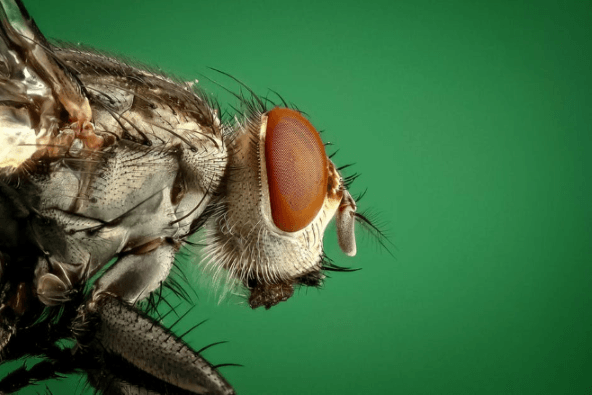
Process of Getting Rid of Flies
The process of getting rid of flies can be divided into two stages:
Stage 1 (Fly Control Techniques) – Stage 1 primarily comprises of the methods that can be used to control the further growth of flies. In these pest control techniques, we try to control the growth of flies by cleaning or rather destroying their breeding sources. This will help to stop any further growth of flies as after this they will have no place to lay eggs.
Stage 2 (Fly Removal Techniques) – Now, after destroying the breeding place of flies, we will be left only with the adult flies. Since they now have no place to lay eggs, so the fly problem will get solved by killing these adult flies. And this is Stage 2 of the process.
Recommended Reading: How to get rid of gnats
Stage 1: Fly Control Techniques
At this stage, we are going to control the growth of flies by destroying their breeding sources. Let’s see the steps involved in this process:
Step 1 – Identify:
First of all, identify the species of the fly that you mostly see in the infested area. You can use the below table to do this. In this table, I have compiled the data about commonly found species of flies and their possible breeding sites.
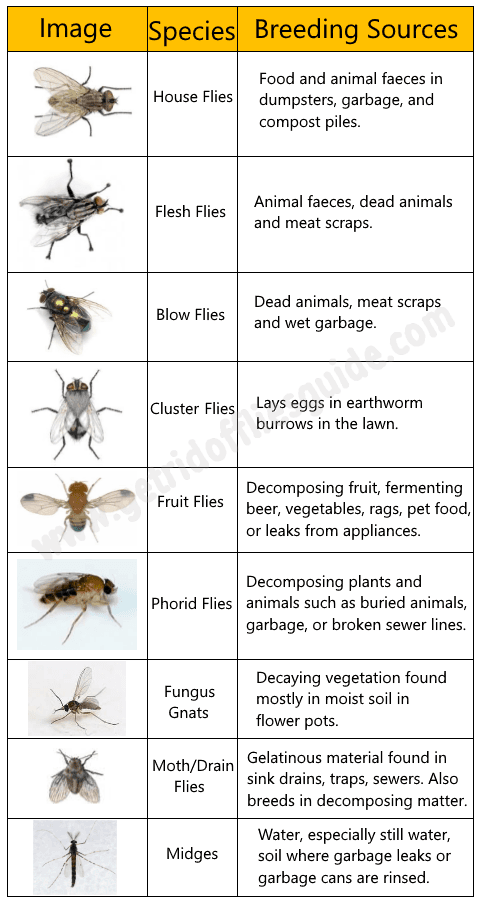
Step 2 – Find the Breeding Source:

Now after you have identified the species of fly that has infested your household, check its breeding sources from the image and find similar sites in the vicinity of the infested area. Please note that such sources could be located up to 500 – 800 meters away from the place of infestation.
This will help you to understand where the flies are coming from.
This step may take time, but then you cannot skip this step as it is the most important step in the whole process.
Step 3 – Clean the Breeding Source:
 After you have found a probable breeding source of those flies, clean it up. Wash fly specks off the walls, ground, or floor with a borax and water solution. This removes the trace that flies leave to attract other flies to an area.
After you have found a probable breeding source of those flies, clean it up. Wash fly specks off the walls, ground, or floor with a borax and water solution. This removes the trace that flies leave to attract other flies to an area.
Check out this article: What Attracts Flies Into Your Home Or Surroundings?
If it is near some garbage can, then it is better to cover it up and remove garbage at least 2 times per week.
If there is some dead animal or bird near this area, get it removed and make sure that it is disposed of properly. Try to keep the area clean and dry.
Step 4 – Wait for 1 to 3 months:
![]() Using the above steps, you will prevent new generations of flies from reproducing in your area. But then, you may have to use some other methods to get rid of the individual flies that may come in the next 1 – 3 months (because this is the maximum lifespan of an adult fly).
Using the above steps, you will prevent new generations of flies from reproducing in your area. But then, you may have to use some other methods to get rid of the individual flies that may come in the next 1 – 3 months (because this is the maximum lifespan of an adult fly).
Stage 2: Fly Removal Techniques
In stage 2 of the process, we are going to have a look at some methods to kill or repel the adult flies in the infested areas. In this section, we are going to see some quick-fire ways to eradicate flies.
When you talk about fly removal methods, there are hundreds of them but in this article, we will only see the best ones.
Also, for the sake of simplicity, we will classify these methods into 7 major categories. You can pick any method from any category to see if it works in your case or not. These categories are as follows:
Category 1: Fly Repellents
1. Using Vodka Based Fly Repellents:
 For some reason flies hate Vodka. They just cannot bear its smell and hence some people use vodka-based repellents to ward off flies.
For some reason flies hate Vodka. They just cannot bear its smell and hence some people use vodka-based repellents to ward off flies.
To make such vodka-based fly repellents you will have to mix the following ingredients:
- 1 cup vodka
- 2 tsp aloe vera juice
- 1 tsp lemon eucalyptus oil
- 1/2 tsp. essential oil blend
After mixing the ingredients, pour them into a spray bottle. Apply it over your skin or spray it near the infested area to repel flies.
Note: Only apply this repellent on your skin if you are comfortable with it. If you have any kind of allergies to any of the above ingredients then it’s better to avoid this method.
- No chemicals
- Easy to use
- Works great
- People with sensitive skin may get skin irritation after using it
2. Using Lemongrass Oil as a Natural Outdoor Fly Repellent:
Lemongrass oil has strong insect repellent properties and in addition to this, it can also keep your home refreshingly aromatic. So, you can use the lemongrass oil to make a fly repelling spray that also works as a room freshener.
To make this spray you will have to mix the following ingredients:
- Lemongrass essential oil- 20-25 drops
- Hot water about 1/2 cup
Keep the solution in a spray bottle and spray it along your doorways and windows or any other fly-infested area.
Note: In absence of Lemongrass oil you could also use other natural oils like Lavender oil, Citronella oil, Eucalyptus oil, Pennyroyal oil, or Peppermint oil. But with them, you won’t achieve the results that you would get with Lemongrass oil.
- No chemicals
- Keeps your home refreshingly aromatic
- Essential oils are generally a bit expensive
Read this: Using natural oils to repel flies
3. Using Clove based Deterrent:
Cloves are pleasurably aromatic for humans but flies (particularly house flies) cannot stand the scent of cloves. In this remedy, you would have to use cloves along with lemons to deter flies.
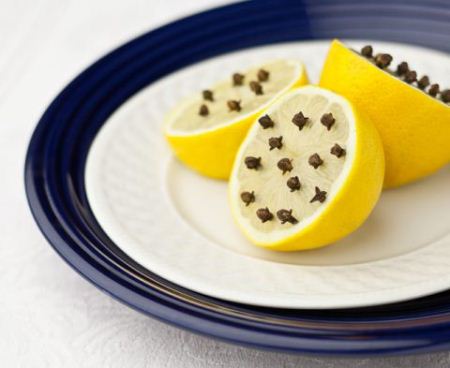 To make this deterrent, take a lemon and cut it into two halves. After this, poke 6-12 cloves into each half of the lemon.
To make this deterrent, take a lemon and cut it into two halves. After this, poke 6-12 cloves into each half of the lemon.
And then, you can keep a few such clove poked lemons in a plate as a beautiful centerpiece for your table, especially for the times when you have meals with friends outdoor like at a barbecue party.
Alternatively, you could also use clove oil as it works better than solid cloves.
- No chemicals
- Easy to make and Use
- Apart from repelling flies, it can also be a beautiful centerpiece for your table
- Only effective against Houseflies
4. Creating Apple Cider Vinegar and Witch Hazel fly Repellent:
This is a natural outdoor fly repellent that works mostly against house flies. To make this repellent, you would need the following ingredients:
- 1/4 cup witch hazel
- 1/4 cup apple cider vinegar
- 30 – 60 drops of eucalyptus oil
To make this repellent mix 1/4 cup witch hazel and 1/4 cup apple cider vinegar. After this, add 30 – 60 drops of eucalyptus oil to the solution and shake the mixture well.
Now, you can apply this repellent to the uncovered areas of your body. Please note that do not let this solution to enter your eyes or mouth.
- No chemicals
- Works Great
- Can be used as a fly repellent body lotion
- Only effective against Houseflies
- The solution may cause irritation if it enters the eyes
5. Using herbs like Basil, Lavender, and Mint to deter flies:
Do you know what’s the easiest way to keep flies out of your house?
Well, if you don’t know then read this:
Flies do not like the fragrance of certain aromatic herbs, such as Elder, Basil, Lavender, Tansy, Wormwood, Rue, and Mint.
 You could plant these herbs in a pot near your doorways to keep flies away. This will not only prevent flies from entering your house but will also make the surrounding environment healthy.
You could plant these herbs in a pot near your doorways to keep flies away. This will not only prevent flies from entering your house but will also make the surrounding environment healthy.
If for some reason you cannot plant these herbs then, get some dried basil and mint leaves. Tie them up in a cheesecloth or a cotton bag and hang them in the infested area.
- These herbs keep your home refreshingly aromatic
- Besides repelling flies, they also purify the oxygen
- Environmental conditions may not favor the growth of certain herbs.
Read this: Plants that repel flies and keep them away.
6. Using Camphor or Citronella smoke:
Citronella and Camphor both are very good at repelling flies. In general, flies hate smoke, but when the smoke is from a citronella candle or a piece of camphor then it becomes doubly effective against them.
To try this method, light a citronella candle or a piece of camphor and spread the smoke in the fly-infested area and you could see them leaving the place instantly.
- No chemicals
- Works great against all species of flies
- Produces smoke and hence may aggravate breathing disorders
Compare the efficiency of ‘Citronella Candles’ with other Fly Removal Techniques [Click Here]
Category 2: Fly Traps
7. Using Sugar-Water fly trap:
To make your Sugar-Water fly trap, all you need is a wide-mouthed jar, some sugar water, and a paper cone.
First of all, pour the sugar syrup into the jar and then cut a 1 cm diameter hole at the apex of the cone. Now, place the cone in the jar upside down, so that it should not touch the liquid.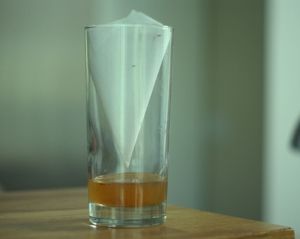
Now, as the jar contains sweet liquid so flies will be attracted to it and will go down through the cone into the jar. Once inside, they won’t be able to fly up through the hole to come out again.
- No chemicals
- Easy to make and use
- Only works against house flies and fruit flies
Read this: Top DIY homemade fly traps
8. Using Milk Sugar Pepper Trap:
This trap works wonderfully for fruit flies. It has been used in many parts of the world since the ancient period to trap fruit flies. To make this trap you would need:
- Milk- 1/4 liter
- Sugar- 3 tsp
- Ground black pepper- 1 tbsp
Pour all the ingredients into a pan. Heat them for 5 – 10 minutes on simmer. After this remove the mixture from heat and pour it into shallow bowls and keep these bowls near the fly-infested area.
Fruit flies will get attracted to this and as soon as they land on the solution they will suffocate and get drowned.
- No chemicals
- Easy to make and use
- Only works against fruit flies
Recommended Reading: How to get rid of fruit flies
9. Disposable Fly Traps:
Disposable fly traps are one of the best fly traps. They provide a simple, no-mess way to keep flies away from your patio and garden.
A disposable fly trap consists of a specially formulated bait or attractant which is water-soluble. The attractant is kept inside a pouch and only gets activated when you add water to it.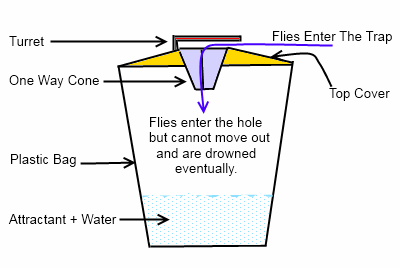
After adding water to it, the attractant dissolves in the water producing a sweet smell that flies love. Flies can get inside the bag, but due to its construction, they are not able to move out and eventually are drowned in the water inside.
These kinds of traps have been proved to work against multiple types of flies like House flies, filth flies, blow flies, carrion flies, cluster flies, flesh flies, stable flies, etc.
- Can be used both indoors and outdoors
- Simple, no-mess way to get rid of flies
- Works against most species of flies
- You may need to keep them away from babies and pets, as the attractants may be toxic
Read this: All about disposable fly traps
Compare the efficiency of ‘Disposable Fly Traps’ with other Fly Control Techniques [Click Here]
10. Using Pheromone Traps:
Pheromone Traps are the most effective traps against multiple species of flies. These traps work like any other normal trap but instead of normal food or odor bait they have pheromones.
Pheromones are powerful sexual attractants that are quite effective in luring multiple species of flies. As soon as the insect gets inside the trap it is unable to escape.
Pheromone traps are very sensitive, which means they can attract insects present at very low densities. They can be used both for indoor or outdoor infestation. The biggest drawback of such traps is that – they are generally limited to one gender.
- Can be used both Indoors and Outdoors
- Highly Effective
- Works against most species of flies
- Only limited to one gender of pests
11. Using Fly Paper to Kill Flies:
Flypapers or fly ribbons are the cheap and best things to trap flies. Flypapers are coated with a sweet fragrant to which flies get attracted.
The paper is extremely sticky and sometimes also has a layer of a poisonous substance above it. And hence flypaper initially attracts the flies and then traps them when they land upon it.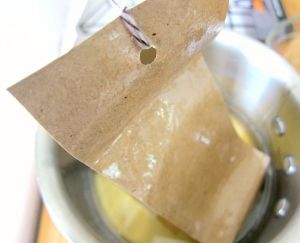
You can also make flypaper at home, for this you would need the following items:
- Sheets of brown paper or thin cards
- Scissors
- Heating Pan
- A large-sized spoon for stirring
- Corn Syrup
- Water
- Thread
To make the flypaper, cut the brown paper sheets into 2 inch wide strips. After this take equal parts of corn syrup and water into a pan and heat the mixture till it starts boiling. Keep stirring the mixture with the spoon while heating.
After this, remove the pan from heat and soak the strips into the mixture for at least 4 – 5 hours. Next, take out the strips and allow them to dry for 2-3 hours. When the strips get dry, hang them in the fly-infested area and your homemade flypaper is ready to catch flies.
- Can be used both Indoors and Outdoors
- Easy to set up and use
- Fly strips look gross especially when they carrying hundreds of dead flies
Read this: All about flypapers
Compare the efficiency of ‘Fly Paper’ with other Fly Control Techniques [Click Here]
12. Using a Fly Vacuum:
 A fly vacuum is a type of small but powerful portable vacuum cleaner that runs on electricity. You only have to switch on the device and point in the direction of flies to catch them.
A fly vacuum is a type of small but powerful portable vacuum cleaner that runs on electricity. You only have to switch on the device and point in the direction of flies to catch them.
Some variants of bug vacuum also have a trap door that securely traps the insects within the nozzle and prevents them from flying back out. With some practice, you can become a pro fly catcher with your portable vacuum.
- No chemicals
- Easy to use
- Fly vacuums are a bit pricey
Compare the efficiency of ‘Fly Vacuum’ with other Fly Elimination Techniques [Click Here]
Category 3: Mechanical Methods
13. Using a Fly Gun:
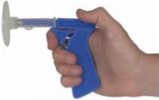 A Fly Gun is an improved derivative of a flyswatter or a fly-killing device.
A Fly Gun is an improved derivative of a flyswatter or a fly-killing device.
It uses a plastic projectile loaded on a spring to mechanically “swat” flies. Over the projectile there is a round perforated disk, when you fire the projectile along with the round disk, aiming at a fly, it hits the fly and the fly gets killed.
It looks more of a toy than a fly killing device.
- No chemicals
- It looks more of a toy than a fly killer
Compare the efficiency of ‘Fly Gun’ with other Fly Removal Techniques [Click Here]
14. Using a Flyswatter:
A fly swatter consists of a thin, flexible net-like small rectangular or round sheet of lightweight plastic, connected to a lightweight wire or plastic handle about 1 – 1.5 feet in length.
The user has to wait for the fly to land somewhere and then he has to use the flyswatter to mechanically crush the fly against the hard surface. This works great when you are dealing with a few flies. But when we are talking about a fly infestation then, this method is not very efficient as it is quite impossible to swat every single fly.
- No chemicals
- The user has to wait for the fly to land
- Creates a mess by crushing the fly
15. Using Bug-A-Salt 2.0:
Bug-A-Salt is a fly “assault rifle” / “fly killing device”, the rifle uses regular table salt to shoot a concentrated spray pattern of salt granules (more or less like a shotgun), killing the flying insect on contact. 
The salt will not harm your walls or furniture but it is strong enough to easily kill flies. This fly rifle is a non-toxic, battery-free device that allows you to have fun while getting rid of flies.
Operating the device is also easy – Fill the rifle with table salt, pump the slide action, then take the safety off and you are ready to go hunting. With Bug-A-Salt you can kill flies from several feet and with a bit of practice, you can take out flies in flight too.
- No chemicals
- A fun way to kill flies
- Use it with due caution. Do not use it towards people, pets, or other animals as it may hurt them.
Compare the efficiency of ‘Bug-A-Salt’ with other Fly Control Techniques [Click Here]
16. Using a Newspaper Roll:
Roll up a thick newspaper and then wait for these pesky culprits to land somewhere, aim and hit. And yes, don’t forget to wipe the bloody mess off the surface as it may attract more flies.
- No chemicals
- The user has to wait for the fly to land
- Creates a mess by crushing the fly
17. Using a Rubber-band:
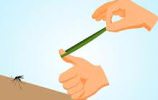 Cut a rubber-band at one end. Find a resting fly, sneak up behind the fly and stretch the band as far as possible. Take aim and let one end go.
Cut a rubber-band at one end. Find a resting fly, sneak up behind the fly and stretch the band as far as possible. Take aim and let one end go.
Skilled people can also use this method to kill flies in the air!
- No chemicals
- Super difficult, more of a theoretical way to kill flies
- Creates a mess by crushing the fly
Category 4: Electrical Methods
18. Using an Electronic Portable FlySwatter:
Electronic portable Flyswatters are also called fly bats as they resemble badminton rackets. These swatters have an ON/OFF switch near the handle. By switching it ‘ON’, the swatter gets charged to a voltage of between 1000 and 2500 V DC.
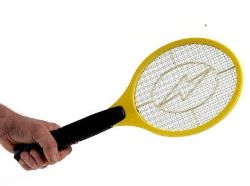 For killing the fly you have to swing the bat in the direction of the fly. When the fly comes near the electrodes (charged grid), a spark jumps through the fly and it gets killed.
For killing the fly you have to swing the bat in the direction of the fly. When the fly comes near the electrodes (charged grid), a spark jumps through the fly and it gets killed.
The best thing about such fly swatters is that you don’t have to wait for the flies to land anymore; you can just kill these pests right out of thin air.
- Portable
- Highly effective insect killer
- Long-lasting, water and dustproof
- Made from UV-resistant ABS plastic
- Difficult to run after the flies to kill them.
Compare the efficiency of ‘Electronic Flyswatters’ with other Fly Removal Techniques [Click Here]
19. Using Electronic Fly Zapper:
An electronic fly zapper is basically an electrical discharge insect/pest controlling device. The device lures the insect towards itself and kills it when it comes in contact. So, unlike an Electronic fly swatter, you won’t have to run after a fly to kills it.
Electronic Fly Zapper emits a white light and hence most of the flying insects (including flies) get attracted to it.
Near the light source, there is an electric plate, when a fly comes in contact with the electrodes it gets a shock and is killed and drops down in the collection plate. You can then clean the collection plate as and when required.
The device also has an insulating guard that prevents people and pets from accidentally touching the conductive surface. Electronic fly zappers are designed for indoor use only.
- Highly effective Electric Indoor Insect Killer
- Attracts insects instantly
- It attracts mosquitoes, flies, and all other flying insects
- A loud sound comes from the device when the insect comes near
Compare the efficiency of ‘Electronic Fly Zapper’ with other Fly Elimination Techniques [Click Here]
20. UV Fly Electric Traps:
Flies and many other flying insects are very much attracted to some frequencies of light and UV fly trap works on the same principle. You can use these Ultraviolet light traps with any standard AC socket.
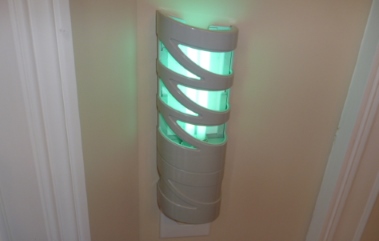
These traps have a single or multiple 2 – 25 Watt ultraviolet light bulbs which can attract flies within a 600 – 1800 square feet area.
Once the flies come near the lamp they try to enter the enclosure and get trapped on the adhesive glue board. The adhesive Glueboards can be easily replaced so you can continue using the unit for years.
The device works in a very clean way – No odors, No Mess, No Chemicals, and No Toxins. Such fly traps are mostly designed for indoor use only.
- Can be used Indoors and Outdoors
- No chemicals
- Eco-friendly
- Durable construction
- Expensive
Category 5: Chemical Methods
21. Using Chemical Fly Sprays:
There are some chemical sprays in the market (like HotShot or RAID Insect killers) that can kill flies instantly. These sprays usually have a quick response time and hence are preferred by many people.
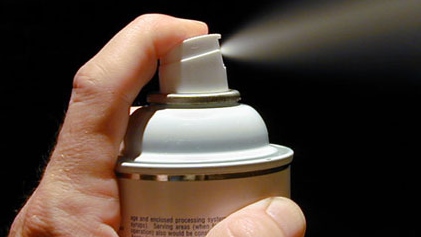
Few of such sprays are pet safe and some are even safe to be used on plants. Regular repeated application for 1 or 2 weeks can give long-lasting results. These kinds of sprays work against multiple species of flies like House Flies, Horse Flies, Deer Flies, Flesh Flies, Bottle Flies, Cluster Flies, Stable Flies, Drain Flies, Gnats, etc.
The only thing that goes against them is that most of such fly sprays are toxic and sometimes can have a bad impact on the environment.
- Shows effect pretty fast
- Works against multiple species of flies
- Easy to use
- Toxic and Bad for Environment
Compare the efficiency of ‘Chemical Fly Sprays’ with other Fly Removal Techniques [Click Here]
22. Using Dish Soap Spray:
Do you know which is the best anti fly spray?
Any Guesses?
It’s your dish soap. Most dish soaps contain borax in tiny quantities. And borax in small quantities (concentration below 5%) works as an insecticide, but it acts as an insect repellent if its concentration is above 5%.
To make your own homemade fly killer spray take an empty spray bottle. And add 7 – 10 drops of dish soap; add 2 cups of warm water. Now close the lid of the spray bottle, shake the solution and your homemade fly killer spray is ready.
Spray it directly on the flies and watch them perishing instantly. Borax dehydrates the exoskeleton of the insects which eventually kills them.
- Shows effect pretty fast
- Easy to make at home
- Easy to use
- Cleaning the dead flies
Note: To make the solution more effective you can also try adding ½ tsp of borax powder to the solution.
Category 6: Biological Methods
23. Using Carnivorous Plants:
If you are searching for a very clean way to kill flies, then I would suggest you to invest in some carnivorous plants like Venus Fly Trap or Sundew.
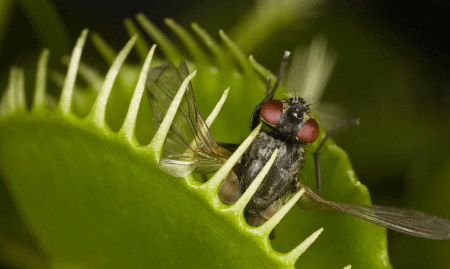
These plants are very attractive to look at, and in addition to this, they do a steady job of attacking, trapping, and digesting flies.
In terms of efficiency, and the number of flies they can consume, they are certainly not the best but they are the cleanest option as they don’t leave any mess after killing flies.
- They provide a clean way to get rid of flies
- In addition to killing flies, they are very attractive to look at
- In terms of efficiency, and the number of flies they can consume, they are certainly not the best
Compare the efficiency of ‘Carnivorous Plants’ with other Fly Control Techniques [Click Here]
24. Using IGR’s (Insect Growth Regulators):
IGR is an abbreviation used for insect growth regulator. Insect growth regulators are one of the best biological methods to end a fly infestation.
IGR’s are chemically manufactured hormones that interfere with the normal lifecycle of an insect. When an insect grows, it undergoes a process called molting. During this process, the insect grows a new exoskeleton under its existing one, then sheds the existing exoskeleton to grow further.
IGR’s prevent the insects from reaching maturity by interfering with the molting process. This ceases the further growth of the insect and because of this insect never reaches the adult phase. And hence is unable to reproduce.
IGR’s are mostly beneficial against drain flies, fruit flies, fungus gnats, and eye gnats.
- No chemicals
- Only beneficial against drain flies, fruit flies, fungus gnats, and eye gnats
- IGR’s take time (at least 4 weeks) to show any noticeable effect
25. Beneficial Nematodes:
Beneficial nematodes are microscopic (not visible with naked eyes) roundworms that act as parasites. Once installed, they search for specific fly species larvae, and other soil-borne pests, penetrate them, and then consume the pest larvae from inside out.
It should be noted that they do not harm people, pets, plants, or earthworms. They are safe to use and once installed they can work for as long as 18 months.
- No chemicals or harmful microbes
- Once installed they can work for as long as 18 months
- Only beneficial against few species of flies
- Beneficial Nematodes take time (at least 4 – 8 weeks) to show any noticeable effect
26. Pyrethrin Based Insecticide Sprays:
Pyrethrins are a class of organic compounds that have insecticidal properties. Pyrethrins affect insects by targeting their nervous systems. In nature, Pyrethrin occurs in the Chrysanthemum flowers.
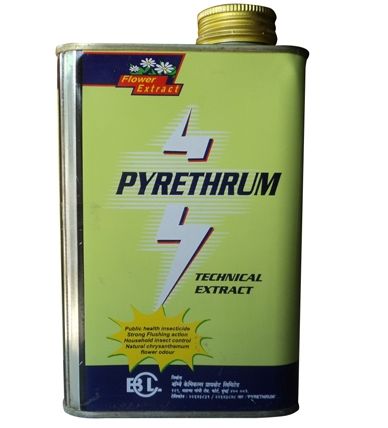 And because of this, it is considered to be the safest insecticides known to man till date. You can get the concentrated pyrethrin based insecticide from any farm supply or agricultural chemical firms.
And because of this, it is considered to be the safest insecticides known to man till date. You can get the concentrated pyrethrin based insecticide from any farm supply or agricultural chemical firms.
The concentration of the insecticide in the spray varies according to the animal to be treated. For example: if you wish to treat cattle then you should buy the spray labeled specifically for them.
For best results, Pyrethrin based insecticides must be sprayed daily on the livestock. But partial pest control can also be achieved by spraying it on every other day. You could spray the insecticide directly or can use a sponge to do this.
- Shows effect pretty fast
- Works against multiple species of flies
- Safe and Natural Insecticide
- Even though this is a naturally occurring insecticide but still it is toxic
Note: Please note that even this is a naturally occurring insecticide but still it is toxic. Use it with due caution.
Category 7: Miscellaneous Methods
27. Using Clear Plastic Bags Filled with Water:
Some people have reported deterring flies by using a transparent plastic bag half-filled with water. Entomologists also support this method for repelling flies. They say that flies have compound eyes, which means that they have around 8000 lenses in each eye.
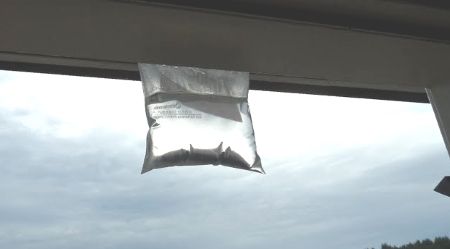
This gives them a great ability to detect movement and changing light patterns. A bag of water reflects light in all directions and flies do not like to be near such a thing.
But the drawback with this method is that it could only be used during the day time. However, you can use an artificial light source at night time but then it doesn’t work that well.
- Easy to make and use
- No maintenance required
- Works wonderfully for some people
- Didn’t work for me, but for many people, it works like a charm
28. Using Fresh Orange Peel:
Have you ever noticed why many commercially manufactured bug repellents contain orange or lemon extracts? These extracts are not only for the scent in the product but they are also excellent bug repellents.
You can also try putting fresh citrus peels in the fly-infested area or place the peels in a small cloth or cotton teabag near the infested area. Rub the peels every once in a while to keep the scent fresh.
- No chemicals
- Easy to use
- Works great
- Works only to repel houseflies
Note: Please do not use this remedy for fruit flies because they are attracted to the orange peels. This method works best for houseflies.
29. Using a Pole Fan to Keep Flies Away:
If flies become a huge problem when you are cooking outdoors or having a barbecue party with your friends, then this is perhaps the best and hassle-free home remedy for flies.
Get a standing pole fan, switch it ‘ON’ and point it towards the grill or table, besides keeping you cool, it will also keep flies and mosquitoes away.
If it is possible, you can also try cooking food using firewood or charcoal. Because when there is smoke there is less chance of flies.
- No chemicals
- Easy to use
- Works greatly against all flying insects
- Can only be used outdoors
30. Hair Spray for Swatting Flies:
We all know that Hairsprays work by creating a liquid elastic layer over your hair that quickly stiffens your hair.
Can you guess what happens when you spray it on a fly?
When you spray Hairspray on a fly, it freezes the wings of a fly and hence the fly becomes slow and becomes an easy target.
But then, who would want to waste his hairspray on a fly. Definitely not me!
- Works greatly against all flying insects
- Easy to use
- It makes no sense to waste hair spray on flies
31. Let Them Go Outside:
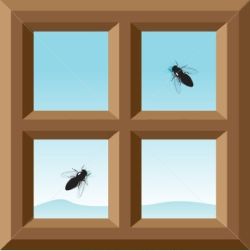 Some noble souls do not like to hurt flies so the option of killing the flies is not suitable for them. But here is good news for such people as they too can get rid of flies and that too without hurting them.
Some noble souls do not like to hurt flies so the option of killing the flies is not suitable for them. But here is good news for such people as they too can get rid of flies and that too without hurting them.
For this, you would have to wait until twilight and then simply open your front or back door and letting them out.
According to researchers, at the twilight time sunlight has some frequencies that are enormously attractive to flies and they instinctively fly towards it.
- Works wonderfully
- No bad Karma
- You may have to wait till twilight, to make this work
32. Darken Your Room:
Flies have a natural tendency to move towards the light. What we would consider a romantic or relaxing atmosphere is something they hate.
So, if you are down for a quiet supper or conversation with friends in the evening, consider dimming your lights.
This will help you to get rid of flies and also help you save some bucks on the electricity bills.
- Works wonderfully
- No bad Karma
- Can save you some bucks on electricity bills
- Not possible every time
33. Boil Malt Vinegar:
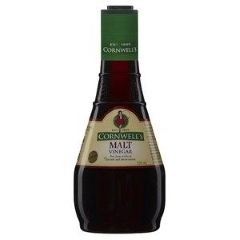 You can also get rid of house flies with Malt Vinegar.
You can also get rid of house flies with Malt Vinegar.
Malt Vinegar when boiled gives out an incense that flies cannot tolerate and hence this can be used for deterring flies.
To use this remedy, take a pot with a thick base. Pour some malt vinegar into the pot. Start heating the pot till the malt vinegar inside starts boiling. After this turn off the heat and keep the pot in the fly-infested area and you will see flies getting repelled by this.
- No chemicals involved
- Easy to use
- Don’t let the vinegar to burn, because malt vinegar stinks after boiling
Note: Please make sure you watch the procedure closely as you don’t want the vinegar to burn because after boiling malt vinegar stinks.
34. Control the Temperature of your Room:
It is a well-known fact that flies love hot weather, but you must understand that they neither like too hot nor do they like too cold environment.
Flies hate anything above 38 degrees Celsius (100 F) and they cannot survive if the temperature rises above 47 degrees Celsius (116 F).
But if raising the room temperature seems difficult, you have another option and that is to cool the room. If the room temperature is lowered to 9 degrees Celsius (48 F), it disables a normal house fly and it is not able to fly.
Whereas, if the temperature is further reduced to 7 degrees Celsius (44 F) you will see them perishing within a few hours.
- No chemicals involved
- Easy to use
- Not possible every time.
35. Other Fly Repelling Methods:
These are some other natural fly repellent recipes, but they work against only a few species of flies.
- Cucumbers – Yes, few species of flies hate them.
- Onions – House flies hate them especially their juice.
- Cayenne Pepper – Take some dried powder of cayenne pepper and mix it with water. Spray using a spray bottle and you will find flies being repelled by its aroma.
- Cinnamon – Some flies hate their fragrance so you could use them as an air freshener.
So, these were all the fly removal techniques.
How Flies Are Bad For Us
Flies are the carriers of very deadly diseases, they infest meat and other food items, some of their species also spread food poisoning bacteria like Salmonella enteritidis.
The habitat of a fly makes it perfectly suited for spreading diseases. Fly is a restless insect, it moves back and forth between food and filth and this helps it in spreading infections faster.
It is attracted to the food by its sense of smell, however, it cannot eat solid food. When it reaches the food it vomits on the solid food and creates a solution of it, then sucks it and thus contaminates the food.
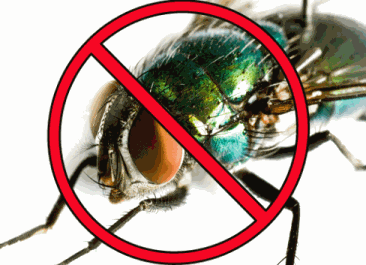
Below, I have highlighted some diseases that are caused by flies:
- Flies can cause typhoid and paratyphoid fevers.
- They can also spread some other diseases like diarrhea and dysentery, cholera, conjunctivitis, etc. by mechanical contamination.
- Other diseases carried by house flies include salmonella, anthrax, and tuberculosis.
- They are also known to transmit the eggs of parasitic worms.
- Sandflies found in South America, Africa, and Europe are carriers of a micro-organism responsible for a disease that eats away the human skin. This disease is known as Leishmaniasis.
Before moving further, let’s see the life cycle of a fly.
Understanding The Life Cycle Of A House Fly
There are 4 major stages in the life cycle of a typical house fly. At the beginning of the first stage, 150 eggs are laid in a moist environment (like garbage, composite, or manure) where food is available in abundance.
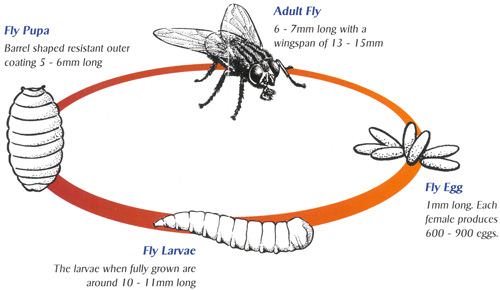
Next, eggs began to hatch within a day and the larva feeds on the food for 5-14 days. After this, the larva crawls to some dry place to pupate. The pupae transform into an adult after 3-4 weeks. Adult flies can live for about a month and during this time they can produce 500 to 2,000 eggs.
This can give you an idea of how fast flies can grow. Now, let’s have a look at the techniques that can be used to get rid of flies.
Summary Of The Top 5 Ways To Get Rid of Flies (Musca domestica)
- Mix 20 drops of LemonGrass oil with 1/2 cup water and spray in the infested areas to get rid of flies.
- Vinegar and Dish soap fly traps can also be helpful.
- Plant aromatic herbs like Basil, Lavender, Tansy, Wormwood to keep flies away.
- Smoke from Camphor or Citronella candles can repel flies.
- Pyrethrin based fly spray can also prove to be a very effective insecticide spray.

More Methods Here: Fly Control Techniques
Embed this Infographic On Your Site
Your Turn
So, this was all from my side on how to get rid of flies. Now that you have learned about all the techniques and strategies for getting rid of flies, it’s up to you to pick a method that meets your needs, is in your price range, and is overall helpful in your case.
As you know that technologies evolve day by day, for that reason I will try to keep the information here up to date. But in case you feel like I have missed some important technique that needs to be included on the list, let me know in the comments below.
Remember, battling flies can be very challenging and time-consuming, but have faith in you and do your best to eradicate each pesky culprit. Please note that in the worst cases you may need to seek some professional help.
Also, I would love to hear your personal experiences and stories about the topic.
Peace!










Thanks for sharing these methods. Initially I had many flies in my backyard. I planted Basil there and it has become a no fly zone since then.
Many thanks for your valuable and timely help.
Glen , can you please tell which basil helps keep away flies.
Hi Raju, In my opinion holy basil (also known as sacred basil) is the most effective variety of basil against flies.
For a lot of flies in the house, wait until dark, with a red color light you can spot them on the ceiling and vacuum them. Hint: they can’t see the red light so you can suck them up before they have a chance to leave. 🙂
Zadi, I must say you have put forward a great resource for the readers. This page is power packed with so much helpful information. I have bookmarked it.
Few days back, we had a backyard party and we used the lemon and clove method to ward off the flies. The results were impressive, the method works like a charm.
Thanks for all the great work!
Btw, I +1 the page too, as token of respect for your hardwork.
Can dead flies’ eggs still hatch?
Yes, the eggs can still hatch.
How do I get rid of the flies in my driveway? I have a carport in my driveway.
Im so going to try some of these.. Thanks a lot. 🙂
Great article. To get rid of flies I open a bottle of nail polish. The smell makes them fly to the ceiling which makes them an easy target.
Thanks for the tip, Jonathan. 🙂
It’s funny I came across this tip because I was sure today that my nail polish was actually ATTRACTING the flies! I paint my nails outside on our porch- the husband cannot stand the smell- and the flies that were already pestering the heck out of me were seriously surrounding me and my freshly painted nails! I was thinking that the smell SHOULD keep them away, not attract them closer!
We’ve been dealing with a recent ‘home invasion’ and have resorted to a fly hunt before dinner each day. We knew that we could walk into a room and walk closely past a resting fly. Stop and look at it and have it seemingly ignore us. Then sneak out to get the fly swatter…and as we’d even approach the doorway back to the room with the swatter hidden behind our back, they’d take off. They are really fast the first days indoors…too fast to swat usually. So we’d try but give up with one or two of the really quick ones.
Oddly, if I came back in with a rolled up catalog or newspaper…they wouldn’t fly away…and we could get them. Leading me to conclude that they can smell the ‘death’ scent on the swatter! Does that make sense? It seems to work reliably.
Great job with the article and your website! An outstanding presentation!
We’ve not been able to find a breeding ground…and I’ve researched further what visible signs might clue us in to a potential spot, with no success. But we think from past experience that some ivy growing on the exterior of our home was the possible culprit…so we are pulling it down and trying your borax method. Thank you for all the great information!
I Like this Article gives allot of ideas that I didn’t know about.. But I have my own mixer that I use to kill them plus other flying bugs and also nats, roaches and other bugs along with having spiders staying away from my place and it’s safer than the bug sprays that you get from the stores… I do it strong but another source said 1 cup of Dawn Dish washing liquid to a Gallon of water… I do a half and half and when they start appearing spray directly on them and it kills then on touch and them sweep or vacuum when dry….
Great site. I’m going to plant some basil, our small side yard here doesn’t get much sun. Then will buy some citronella torch/candles.
Take a orange (fruit) and hand full of cloves..then inject those cloves in the orange covering its circumference . and place it near a place where you find flys .
We used to make those to keep silverfish and moths out of closets, i didn’t know you could use it for flies. Thank you!
I love the fly vacuum! Keep extra backups so you do not have to run to the store in the middle of the fly battle! Thanks for the other info. I love the Dawn and water that made me remember that a friend used to buy Christmas tree flocking and spray it on ant and every bug.
I forget to buy it.
Thanks again. Pat.
Thank you so much for your detailed information. Our back yard and Lab has been taken over by these pesky house flies. And are driving us crazy. Adding dishwashing soap and water already started working.
Thanks a ton.
A flame thrower! If you don’t have one use dynamite! No more flies guaranteed! LOL!
… I HATE flies!
Great blog article. Well researched, written and lots of ideas. I just moved to a 100+ year old farmhouse located on a cattle feeding ranch. So you can imagine the source of the flies. I despise fly paper hanging from the ceiling, though it is very effective, and don’t use poisons because I have pets. And don’t want to add more hazards to the environment. Now you have given me many natural ways to ward off the flies. My house may smell like a mixture of citronella/orange/lemon/cloves/dish soap/basil/vodka, but hopefully, there will be a few less flies.
Thanks!
Very informative, and handy and well put together info.
Thank you very much. I will be trying these methods out.
The water bag trick works 99%. We always eat outside at weekends, having “brunch” about eleven,
we used to be inundated with them. Today i saw 1, we have a bag at each end of our verandah, about 6m apart. They have been there for 6 months now. And started working on day one!!
Great job with the info !!! Thank You !!
Hi people,
-Wine bottle Cork cut up,and soak em in a waterbowl.
-DRIED COFFEE GROUND IN A meshbag.
-Onions, pick cloves, in it!
All of this seems to work. 🙂
But Plastic bags with water + coins inside does not works for me.
Even colored reflection decorations. Glued onto a newspaper surrounded by waterbags doesn’t help much. ( nightclub sphere style) 🙂
I love the part using rubber band to kill flies. Some skilled people can kill flies in the air..
Wooo that’s great I am going to try this.
Here’s our solution-super icky, but it works! I’ve tried the bag + pheremones (expensive, smelly), fly paper, etc. But by far the 2 best lures I’ve found are cooked and eaten corn cobs, and dog poop.
I bought Catchmaster brand window fly traps and lay them on top of either lure. We have 2 dogs and a compost pile and within 2 hrs, they’re full. I’d estimate it catches 4-500 flies per clear paper. It’s bad but affordable, no toxins and efficient.
Grossest part is collecting the buzzing/vibrating paper!
Thank for sharing these tips Amelia. 🙂
Ewwww Amelia that does sound gross LOL
Great ideas everyone. I have no clue where our source is although my yard has a lot of flowers. Clean neighbourhood, unless someone has bad garbage outside? Going to try all of the suggestions and the borax outside on the walls and patio. I have never seen bugs so bad than this year. Its nuts!
Thank you for all the info! It’s very helpful.
I would have like a column with the main food type for each flies in the fly species table, in order to put the right thing in the fly traps (commercial or homemade).
Regards
My boyfriend said he read something online about how flies hate bees, and if you could use a brown paper bag and crumple it up to resemble a bee’s nest it is supposed to deter flies. Has anyone ever heard of this option? Thanks for all the other suggestions. Lots that I haven’t tried, so I’ll be trying these!
Thank you so much. I did pest controll from 2005 – 2008. I forgot the details about the flies. I have my books but your info is great and reminded me of what I need to do for drain flies. Very informative and honest. Thanks again. Best Wishes
I just tried the dish liquid and water method. The sprayer is a foam type. I shook up the solution, sprayed, it came out as a foam, and wouldn’t you know, took out well over half the fly population. The spray method works. But, us a former spray, not a mist of fine spray, it might not work properly. Coat the foam over all the flies and let them die in peace. Thanks to the author of the topic. Really worked.
In our old house we had a problem with flies. There were hundreds of them in each window when I came home every day.
But we got it under control by having an uncovered lightbulb (low energy or LED to save energy) turned on in the attic/side of the roof (the breeding ground under the hot tin roof) and a flypaper hanging a few inches above it. The light attracts the flies and then they get stuck on the glue of the flypaper.
You just need to change the flypaper and sweep the floor every once in a while.
I have a lot of flies that seem to come out from under the siding of my sunroom. They don’t look like the regular house fly. Their wings seem longer and closer to their body. How do I get rid of these pests..
They may be cluster flies.
Here are the ways to get rid of them Eliminate Cluster Flies.
If you turn on the air full blast the cold makes them fly slower and then you can kill them…
Also a suspension of coconut oil and water in a spray bottle will make them slow down so that you can kill them.
Here in Australia some days is very hard to walk on the street thanks to the flies. They fly into your face and around your head driving you crazy. A couple of days ago I started to use a cigarette lighter doing 2-3 short quick flashes in both sides of my head and it seems to repel them and for a while they leave me alone. 🙂 so happy
I had a bottle of vinegar mixed with tea tree oil and a oil blend called health shield that has a mix of several antibacterial, antimicrobial oils. I added some 7th Generation Lemongrass/Clementine dish soap to it and went to battle. I think I got most of them, hallelujah. Sadly, I think they’re showing up due to my upstairs neighbors have a cat, four ferrets, a kid in diapers, and three tarantulas in a 900 sq. ft. apartment….
Now I have to get another spray bottle just for my original cleaning solution since the dish soap will leave a film on everything!
Thanks so much for all this great information!
All you need for this is something black, like a bin liner or a towel. Make sure your window is open in the room, and get the fly near the window. Flap your black item as much as you can.(I know, you look a bit of a fool for doing it) The fly will hear the flapping sound and see what to it, looks like it’s natural predator, a bird, or a gigantic fly. I guarantee it will fly in terror out the open window. I have used this method personally, and it seems to work on 1 fly or several.